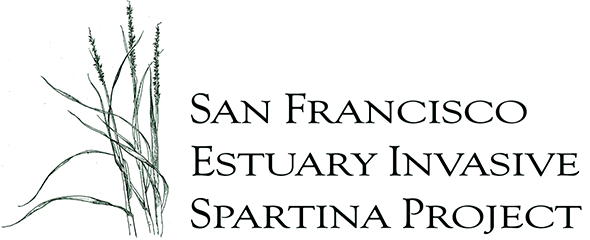Bair Island restoration site, San Mateo County.
Restoring with Native Plants
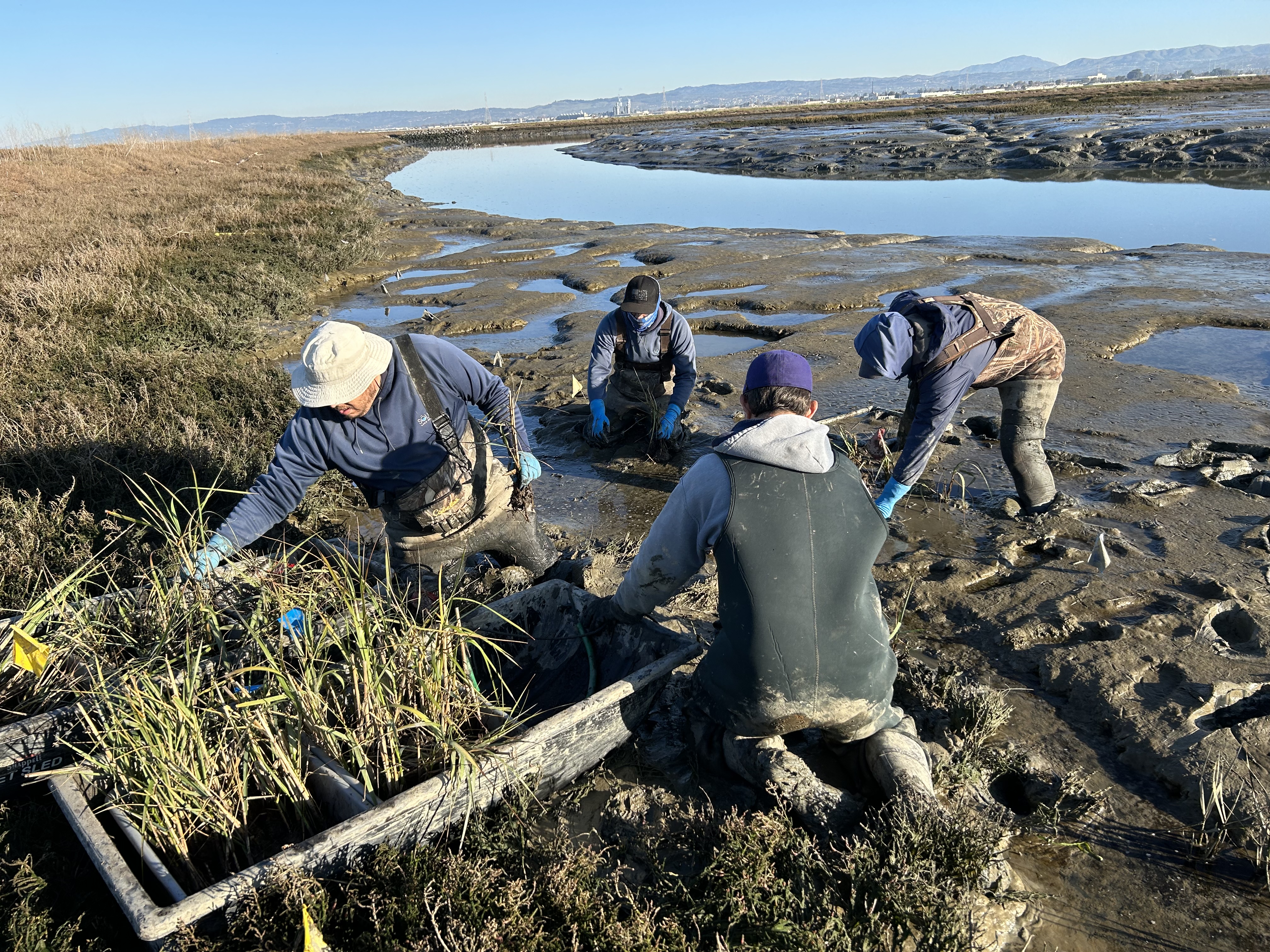
From the 1980s on, the hybrid Spartina invasion not only displaced the native cordgrass, it also impeded the establishment of a diverse assemblage of native plants at early restoration sites and historic marshes. In 2011, the Invasive Spartina Project team established a restoration program to enhance habitat in sites most heavily impacted by invasive Spartina, focused on supporting the endangered California Ridgway’s rail and other tidal wetland species.
The restoration program is a key component of invasive species and endangered species management. Restoration efforts prioritize establishing key habitat components for rails and other wildlife: cover from predators for foraging, roosting, nesting, and high tide refuge. Together with project partners, the project team has restored habitat at more than 40 sites, planted more than 550,000 native plants, and constructed 82 high tide refuge islands at 16 sites.
Tidal zone enhancements
The restoration program is using rapid active enhancement to quickly repair degraded sites, and to encourage passive revegetation of native plant communities over time. The team’s strategy to effectively crowd out weeds is to plant high-density clusters of a single native species in each plot. The team selects tall, fast-spreading perennial native species, to offer shade and cover for rails and other wildlife. Many of the chosen species are spread by rhizomes (creeping root stalks), offering a competitive advantage to cover more ground and to survive dry years. This planting system also allows maintenance teams to return and pull weeds around the edges with minimal disturbance to the restored habitat.
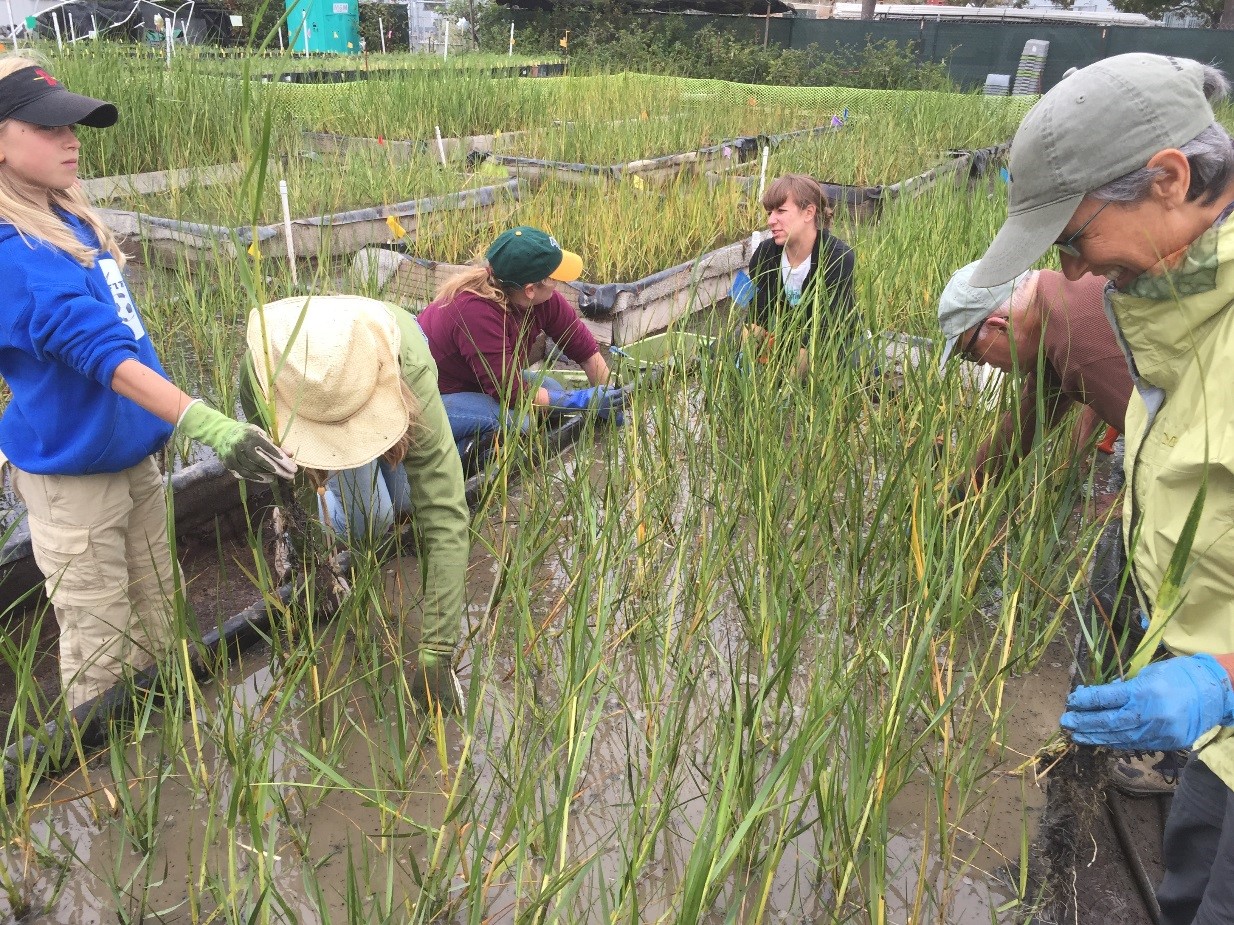
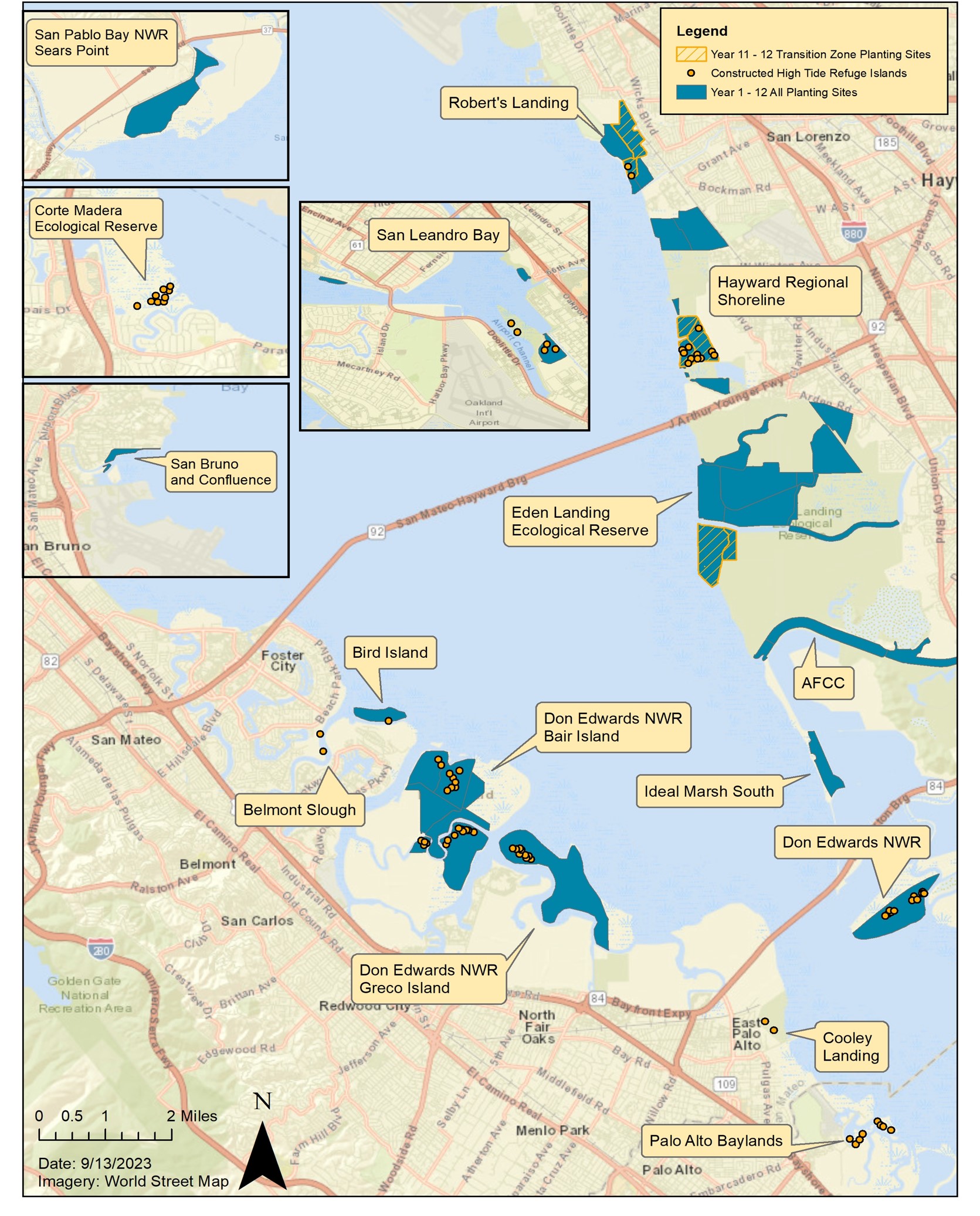
Blue – sites with plantings, primarily planted Pacific cordgrass (Spartina foliosa) and marsh gumplant (Grindelia stricta)
Orange dots – sites with constructed high tide refuge island features, 82 at 16 sites
Orange hash marks over blue – 6 sites with enhanced wetland transition zones
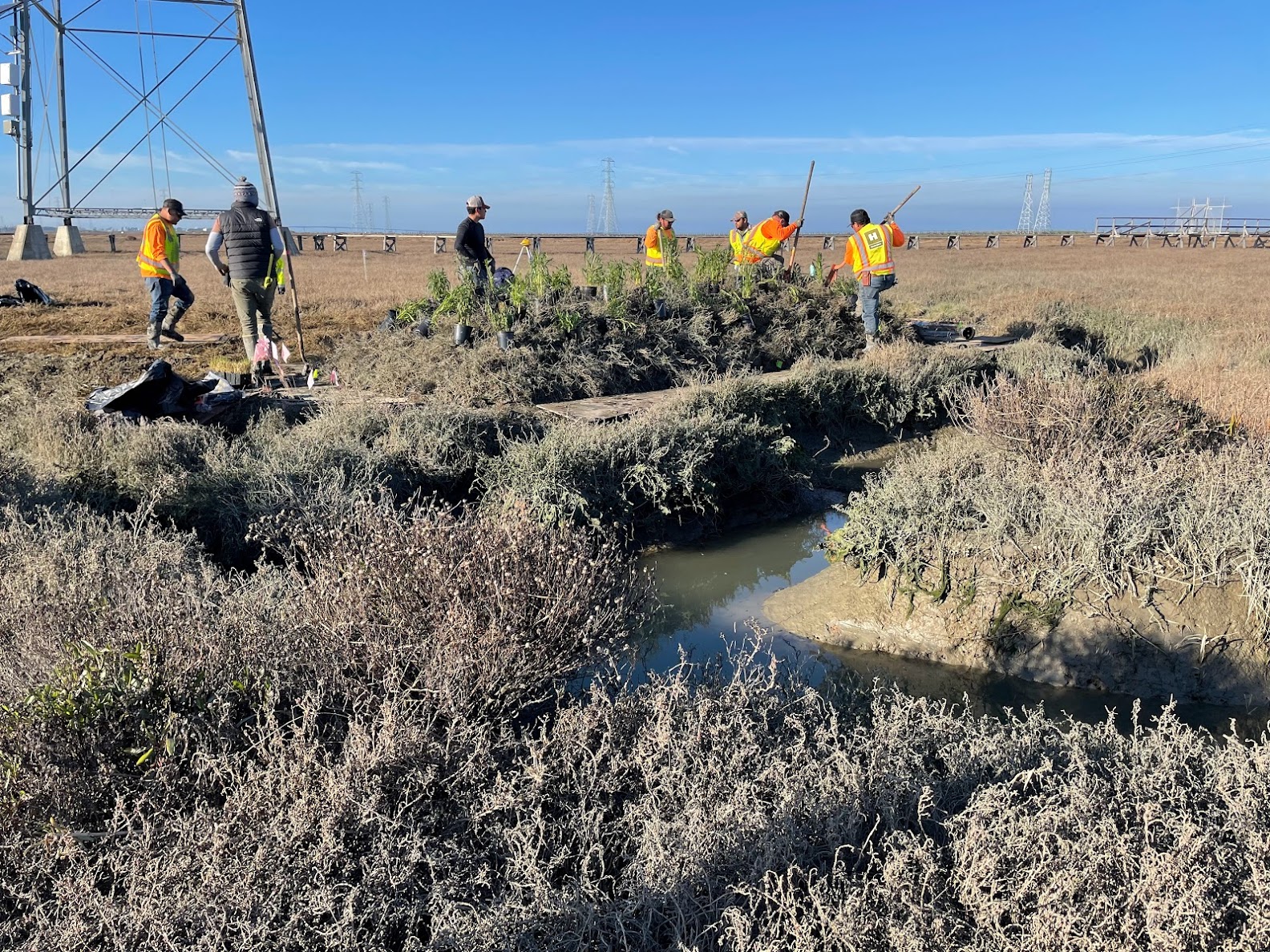
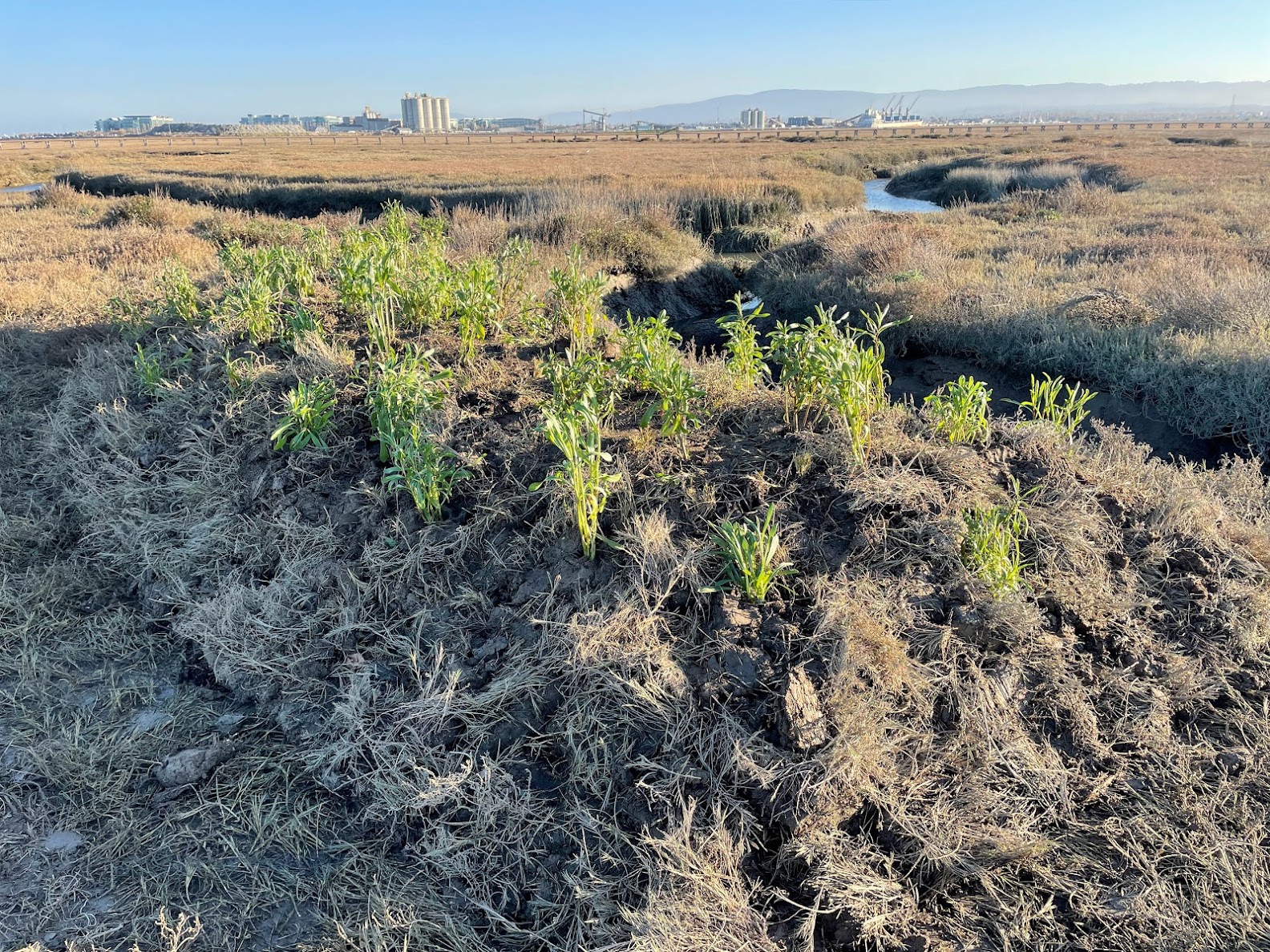
High tide refuge islands
To provide targeted protection for Ridgway’s rails, the Invasive Spartina Project team and project partners have constructed 82 high tide refuge islands at 16 sites with existing rail populations. These islands were created in response to research finding that the highest mortality for Ridgway’s rails happens during winter extreme high tide events, especially those that coincide with winter storm events.
Planned in collaboration with the U.S. Fish and Wildlife Service and created with assistance from the U.S. Geological Survey and independent contractors H.T. Harvey & Associates, crews have constructed small earthen islands planted with marsh gumplant and other native plants. The islands are adjacent to a tidal slough, and located at channel confluences to facilitate rail use. Islands were constructed with slough channel edge sediments from the same site to ensure suitable sediments for marsh plants, to minimize costs, and and to avoid any impacts that would have resulted from importing soil out to these remote marsh locations.
The earthen islands strike a balance between creating adequate height to substantially increase refugia (once the gumplant matures) without promoting upland weed invasion: about 1 to 3 feet above the existing marsh plain elevation, depending on the site.
Native species planted in this project include:
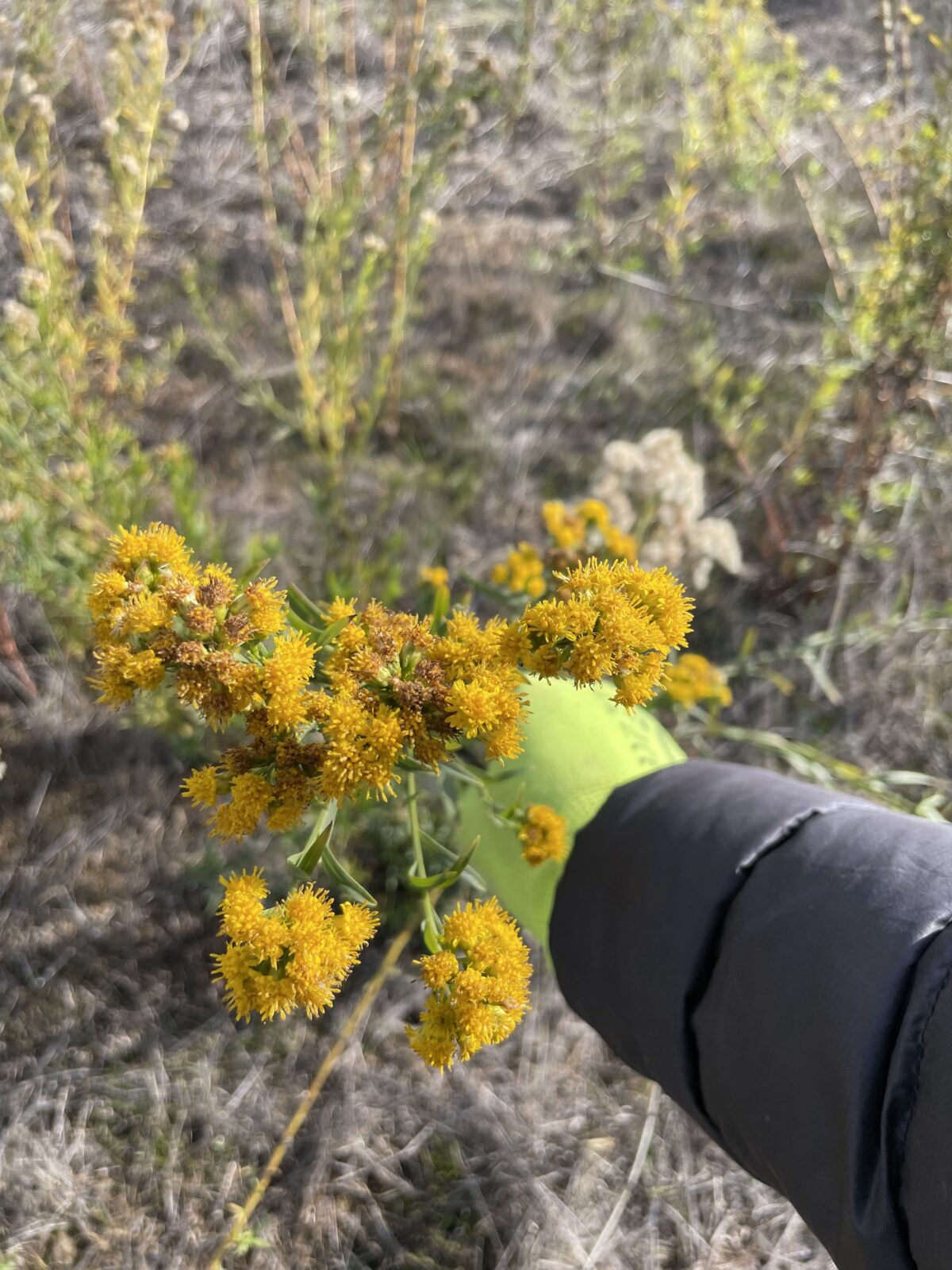
(Euthamia occidentalis)
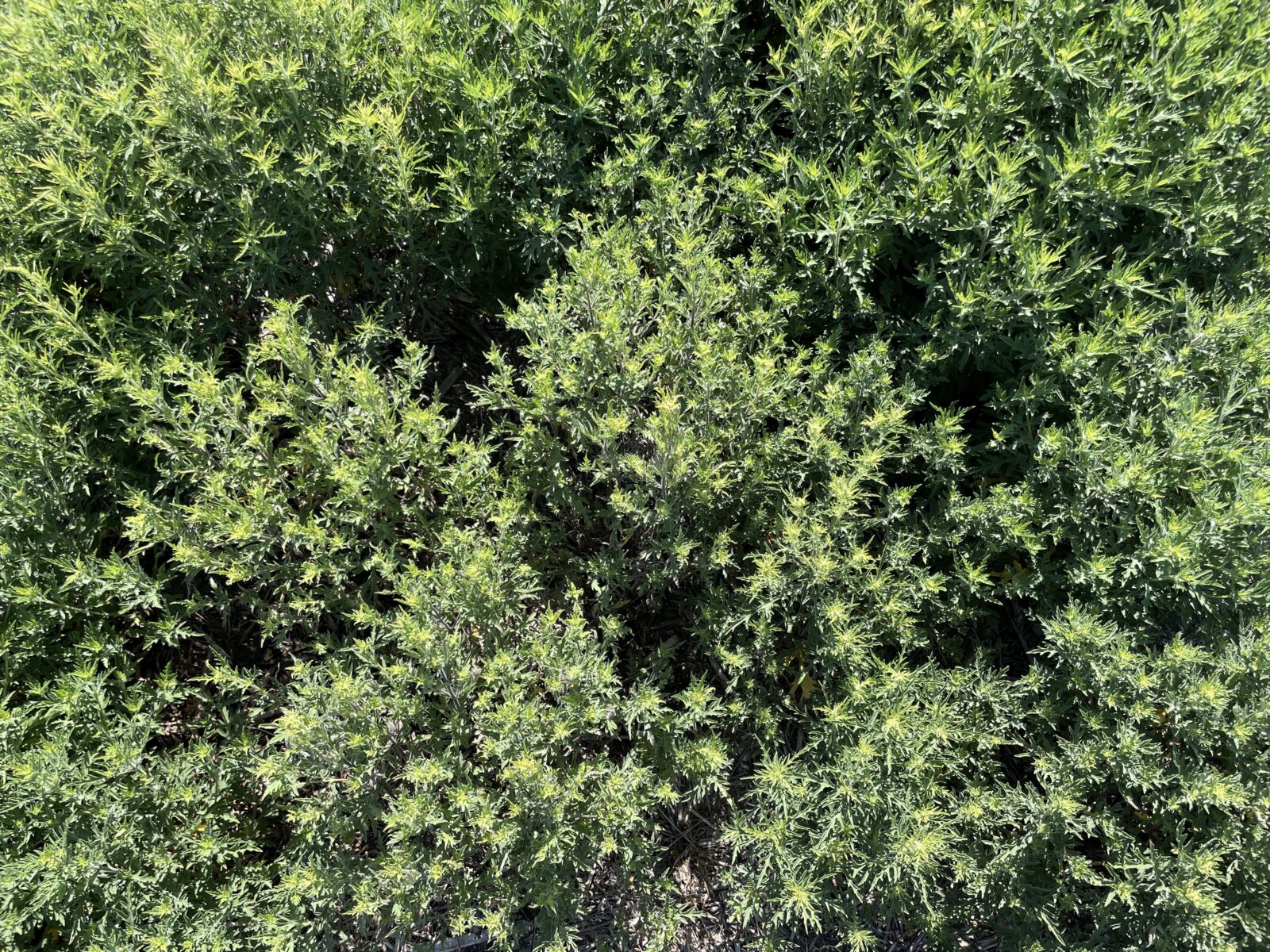
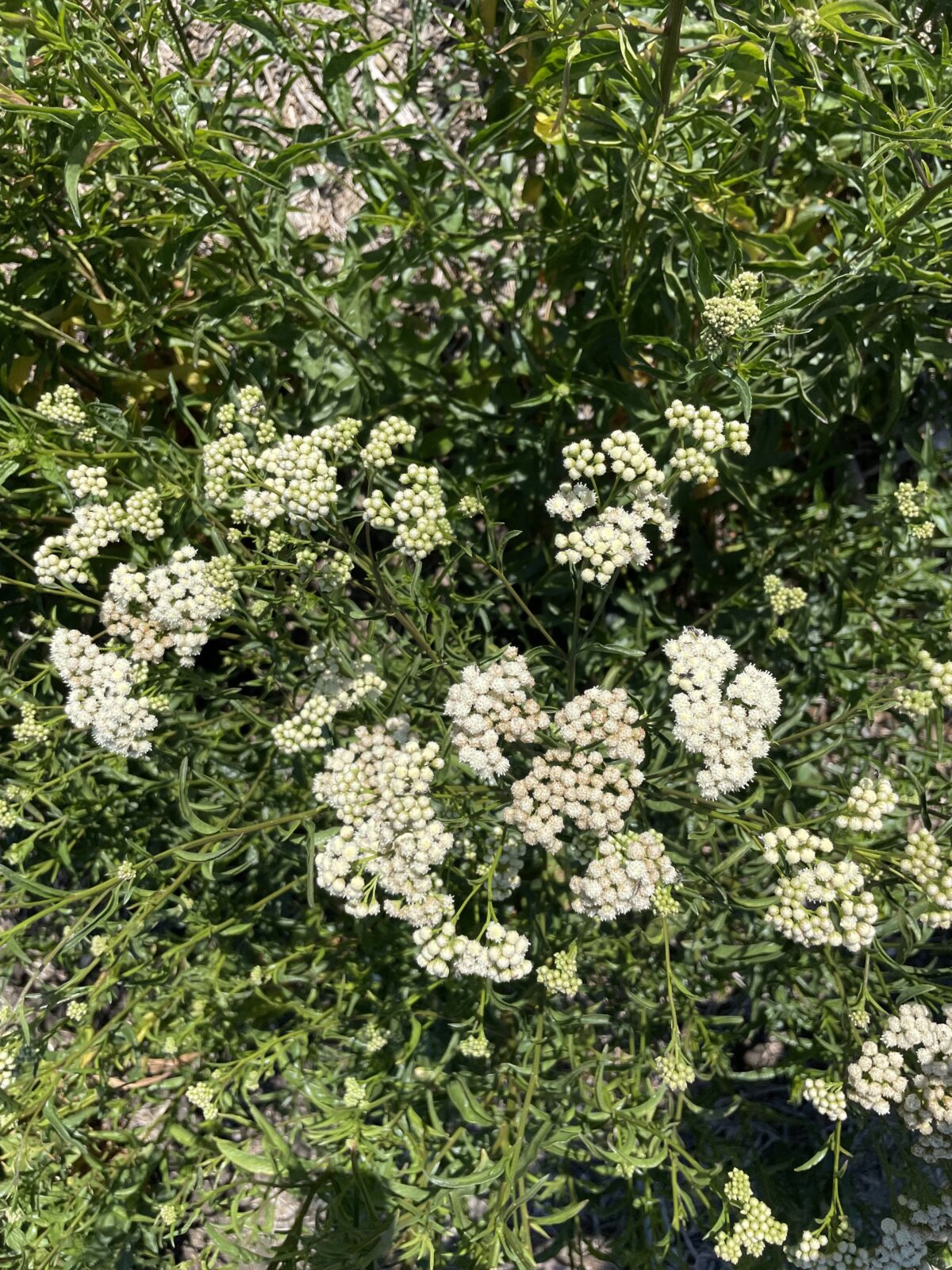
(Baccharis glutinosa)
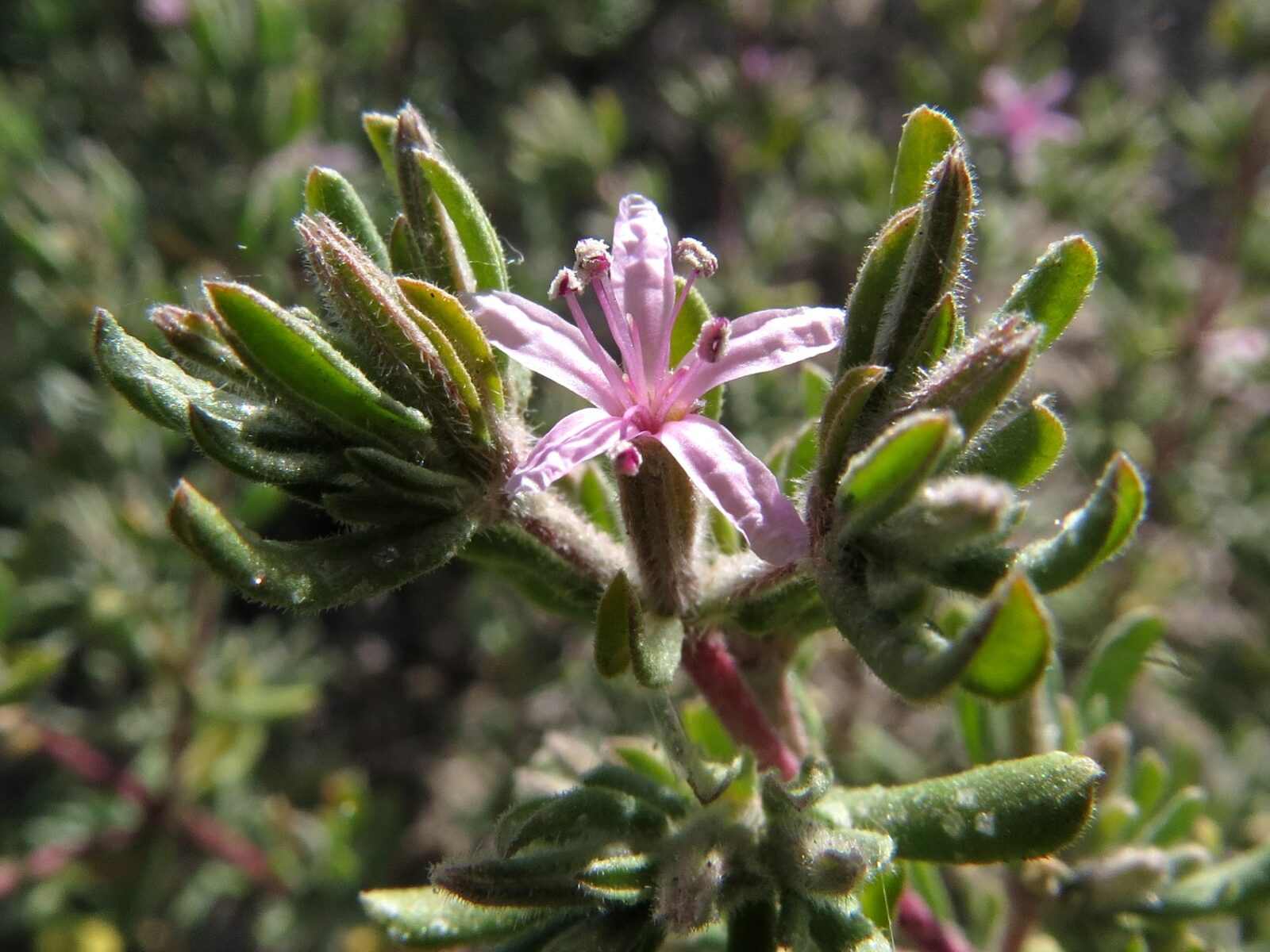
(Frankenia salina)
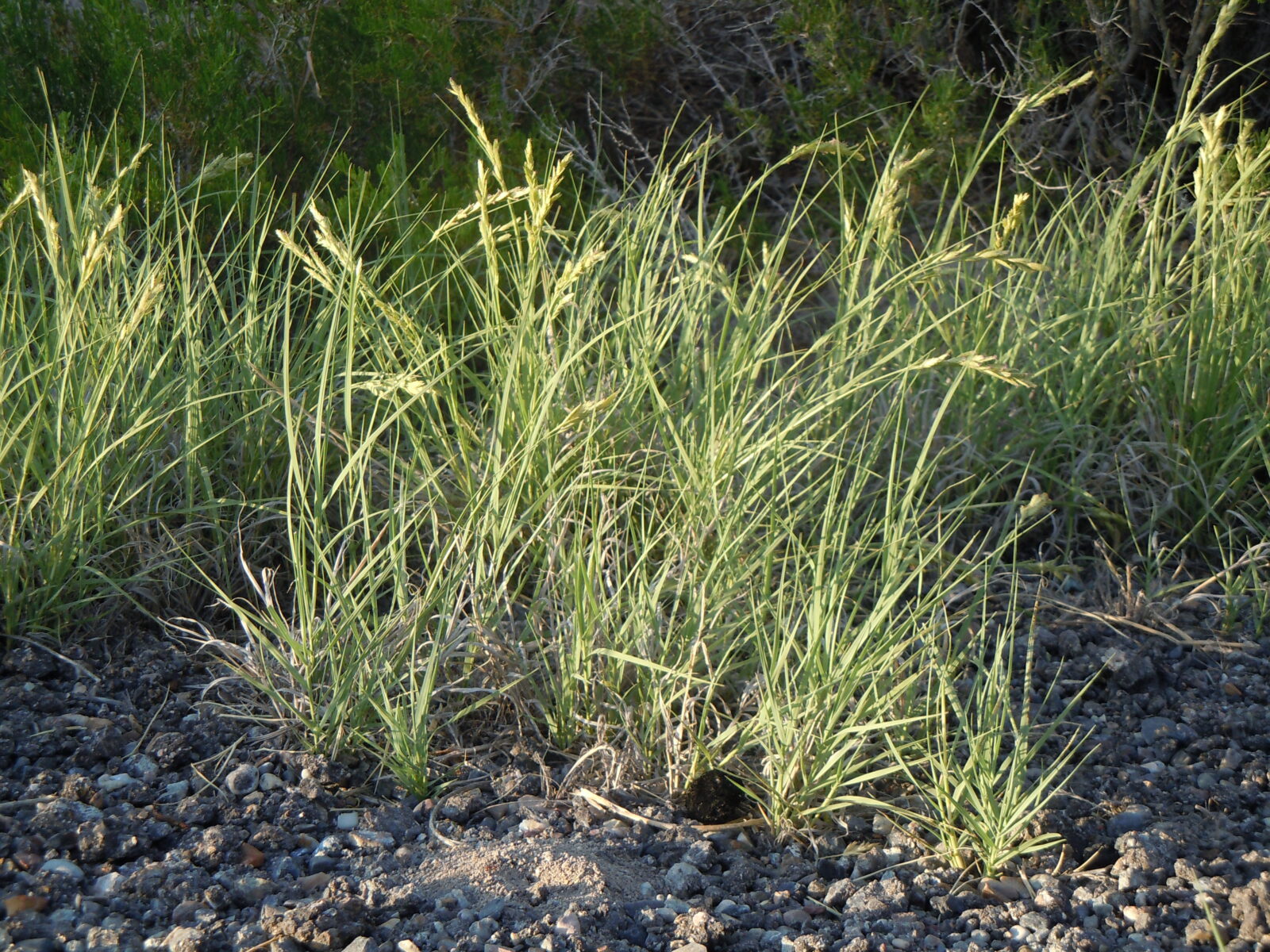
(Distichlis spicata)
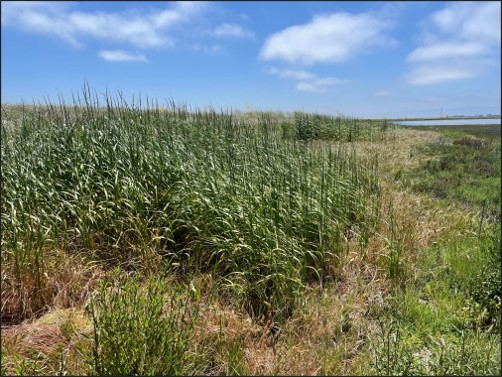
(Elymus triticoides)
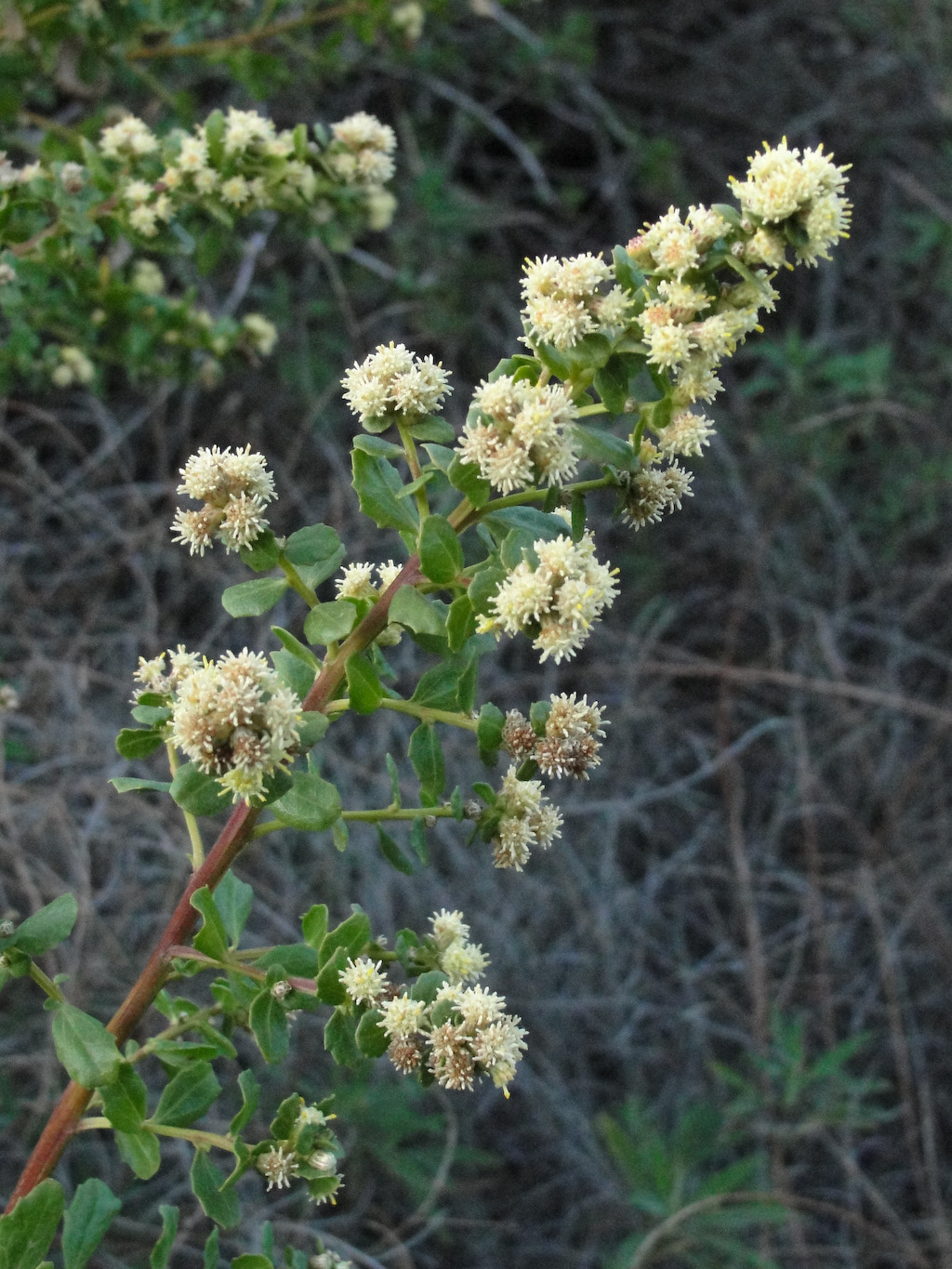
(Baccharis pilularis)
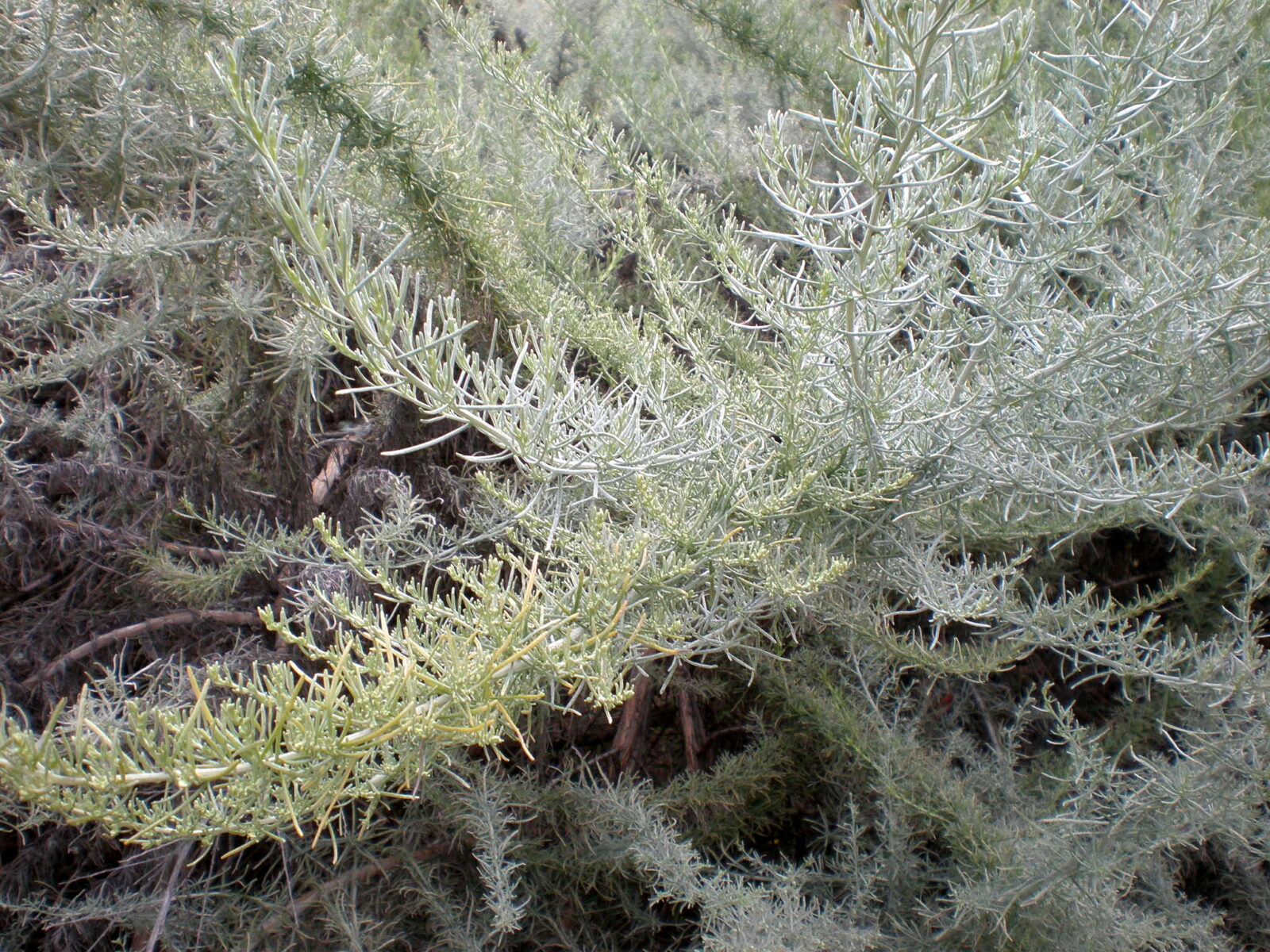
(Artemisia californica)
Selected photo credits: Frankenia salina by Jonathan Cotton CC BY-NC-SA 2.0 DEED; Distichlis spicata by Matt Lavin CC BY-SA 2.0 DEED; Baccharis pilularis by Miguel Vieira CC BY 2.0 DEED; Artemisia californica by Jardín Botánico de Barcelona CC BY-SA 4.0
